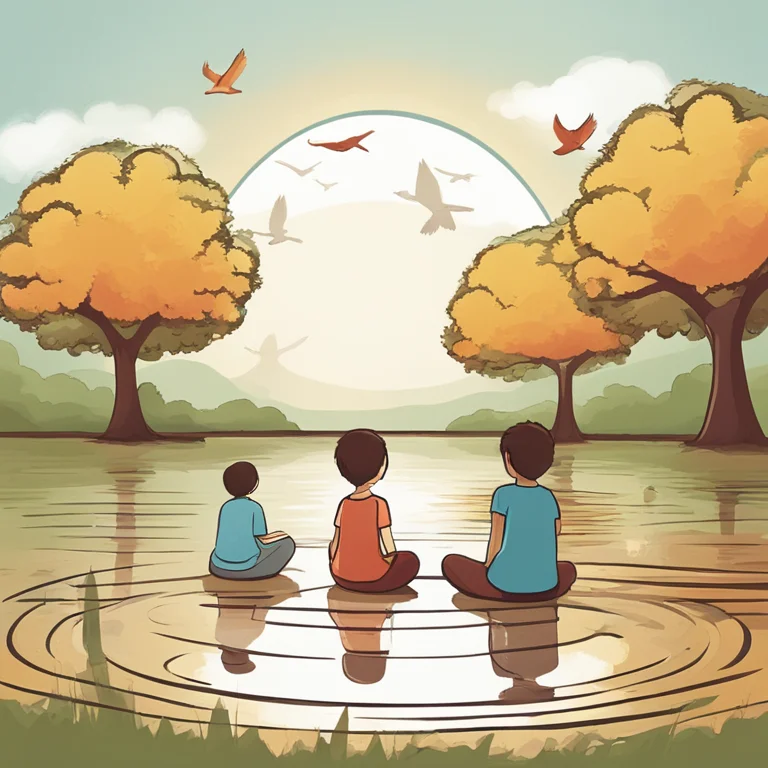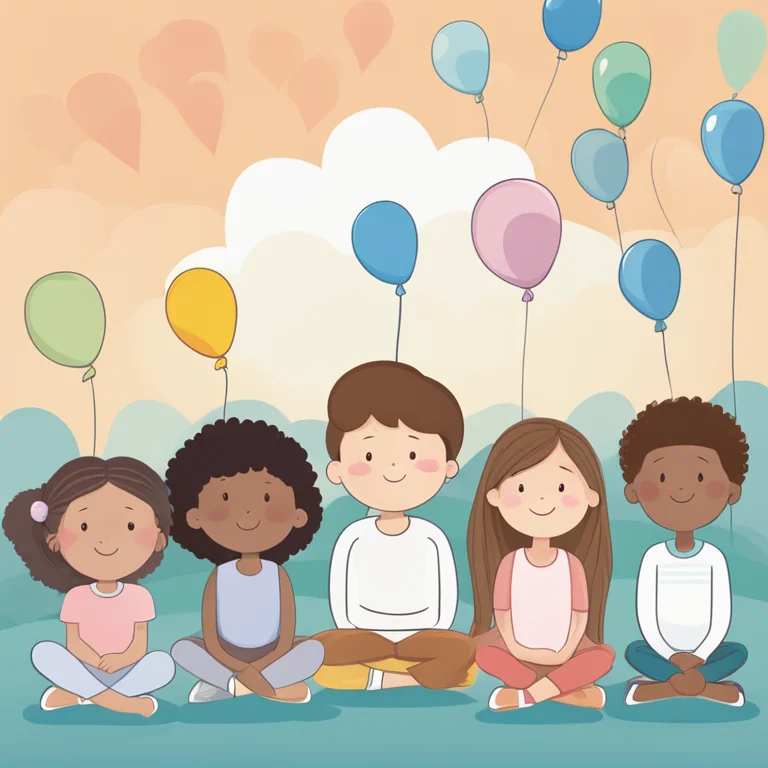
Mindfulness Meditations for 1st Graders
Discover how mindfulness meditation can benefit first graders, fostering focus and well-being through simple, age-appropriate techniques.
article by Hina Kurosawa
Introducing Mindfulness at a Young Age
Mindfulness meditation isn't just for adults; even children as young as first graders can reap the benefits of this practice. Introducing mindfulness early on can help children develop essential skills such as focusing attention, recognizing emotions, and calming themselves. But for six and seven-year-olds, the approach to meditation must be suitable for their understanding and developmental stage. It's about connecting with the present moment in a playful and engaging way—turning mindfulness into a fun part of their daily routine.

Creating a Child-Friendly Meditation Space
Before diving into meditation, it is important to create a space that feels safe and comfortable for children. This could be a quiet corner of the classroom or at home with cushions, soft lighting, and perhaps some nature elements like plants or stones. The environment should be inviting and free of distractions, allowing first graders to focus on the experience. For many children, a designated area can signal that it's time to transition into a more mindful state.

Simplifying Mindfulness for Better Understanding
When teaching mindfulness to first graders, simplicity is key. Using simple breathing exercises and guided visualizations can help them grasp the basics of meditation. Instructors can use metaphors like imagining their thoughts as clouds passing by or visualizing a balloon inflating and deflating with each breath. Engaging their senses by focusing on sounds, sights, or tactile sensations can also be a great way to ground them in the present.

Incorporating Mindful Moments Throughout the Day
Mindfulness can extend beyond structured meditation; it can be incorporated into everyday activities. Teachers and parents can encourage moments of awareness during tasks such as eating a snack, listening to music, or during quiet reading time. These mindfulness moments help children learn to pause and appreciate the activity at hand, nurturing a habit that can contribute to improved concentration and emotional regulation.

Cultivating Emotional Intelligence
A core benefit of mindfulness for first graders is the development of emotional intelligence. Through mindfulness exercises, children become better equipped to understand and express their emotions. This self-awareness can be incredibly supportive in a classroom setting, where conflicts and strong emotions can arise. Regular practice helps children approach these situations with a sense of calm and a greater capacity for empathy.
Using Technology to Support Mindfulness
In our digital age, technology can be a helpful ally in teaching mindfulness to young children. There are apps and online platforms specifically designed with interactive mindfulness activities for kids. These resources often use stories, animations, and games to make meditation appealing and understandable. However, it’s crucial to balance screen time with real-world experiences to ensure a healthy relationship with both technology and mindfulness.
The Role of Adults in Mindfulness Practice
Adults play a pivotal role in introducing and sustaining a child's mindfulness practice. Whether as educators or parents, it's beneficial to lead by example and participate in the practice alongside the children. This not only shows kids the value that adults place on mindfulness, but it also allows for a shared experience that can strengthen bonds and improve collective well-being.
Published: 1/9/2024
Modified: 1/9/2024
More predictions
Come back here soon to learn more about yourself and your future


The Brain's Transformation Through Meditation
Delve into the profound effects of meditation on brain structure and function, and how it influences cognitive abilities and emotional well-being.


Mindfulness Meditation for Young Students
Mindfulness meditation practices tailored for first graders to foster attention, calmness, and emotional regulation.


Eyes-Open Meditation: A Journey Within
Discover how meditating with eyes open offers a unique path to mindfulness, blending ancient wisdom with present-moment awareness.